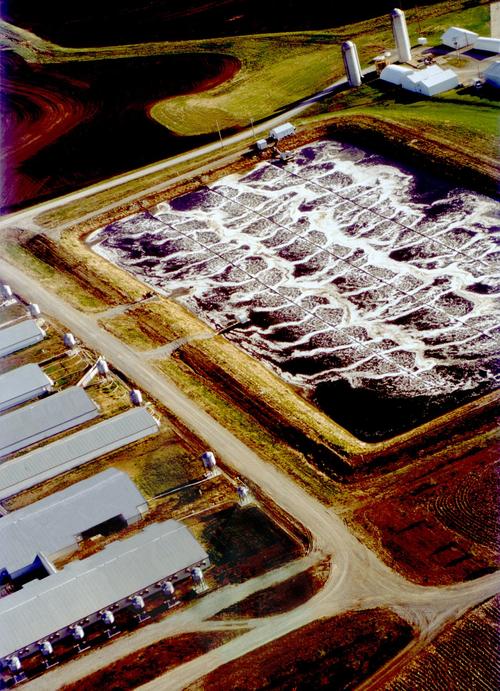A wastewater lagoon or treatment pond is a scientifically constructed pond, one to two meters deep, that allows sunlight, algae, bacteria, and oxygen to interact. Biological and physical treatment processes occur in the lagoon to improve water quality. The quality of water leaving the lagoon, when constructed and operated properly, is considered equivalent to the effluent from a conventional secondary treatment system. In addition because of the longer residence time of wastewater in the lagoon (days), removal of pathogenic bacteria and viruses by natural die-off is greater than in an activated sludge treatment plant (residence time usually several hours). Cysts of parasites and helminth eggs are also usually removed through sedimentation in the lagoons. Wastewater lagoons are also called 'waste stabilization lagoons', because the organic substances in the wastewater are converted to more stable (less degradable) forms. It is generally unlined percolation of wastewater into the soil and groundwater takes place. With time, the percolation rate will reduce, because of formation of a sediment layer. Therefore, a lagoon can be lined with a layer of clay or with an impermeable plastic membrane if protection of groundwater is desired, without affecting the performance of the lagoon. Evaporation loss of water can be significant in arid climate regions. However, winters in cold climates have a significant impact on the effectiveness of lagoons, and winter storage is usually required.
(UNEP 2000 & EPA 2004)
